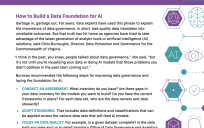Hans Rosling was a renowned scientist who blended effective storytelling into his statistical findings through data visualization. If you view his TED Talks presentation, you are immersed into a humorous and yet illuminative and serious discussion of his findings. His talk begins discussing child mortality rates among countries.
He walks the audience through the technical process of his methods, but also explains it in a way that someone who isn’t immersed in statistics lingo can follow fairly easily.
Around the 17-minute mark of the video, he walks the audience through one of the questions he posed. He asked, “Which country has the highest child mortality rates among the five pairs?” and walked through the five country pairs to show which one had the highest mortality rates.
He joked about his other findings related to that question. He found Swedish students knew statistically less than chimpanzees when asked to guess which country they thought would have higher mortality rates in the pairs. He found that preconceived notions affected their beliefs and led them to pick the incorrect answer. This humorous joke highlights his attempt to reveal misconceptions and how statistics can show us what is actually true.
That point dives into his overall talk, showing how he will debunk myths about the western world and “third world” developing countries. He shows the model he made displaying data from 1962, showing where the western countries and developing countries were in relation to fertility rates and life expectancy rates.
Rosling sought to see how that data changes for those countries from 1962. He doesn’t just silently let the data change each year and let the audience try to figure it out. He enthusiastically points out the countries and the trends they begin displaying as the years wear on. His voice delivery isn’t monotonous either. Instead, it’s full of frantic enthusiasm as he tries to highlight all the trends countries are going to, adding witty quips to the timeline.
He highlights major events of the decade that would affect the data, such as in the 90s, with the HIV epidemic that affected the the life expectancy of African countries and rest of the world, which moves the rest of the world reflecting smaller families and longer life expectancies, which he remarks that “it takes us into a new world.”
He then picks out two countries: the United States and Vietnam in 1964. The United States had longer life expectancy and smaller families, while Vietnam had lower life expectancies and larger families. He shows the effects of the war and family planning policies in Vietnam as time passes on, and by 2000, Vietnam has long life expectancy and smaller families just like the United States.
The rest of his video shows other data visualizations about countries. How he breaks down each of his findings highlights great methods of storytelling and data visualization. He’s enthusiastic about his data but explains it in a way that makes it easy for the audience to follow.
His method of data visualization is a great and innovative way to engage the audience!
For more reading on effective data visualization, check out:
3 Types of Data Visualization That Can Bring Analytics to Life
Elaine Nghiem is part of the GovLoop Featured Contributor program, where we feature articles by government voices from all across the country (and world!). To see more Featured Contributor posts, click here.





As a designer, I can’t agree with you more on the importance of data visualization. Along with enthusiasm and genuine interest in the topic, innovative data visualization can do wonders in getting a difficult topic across all target audiences.